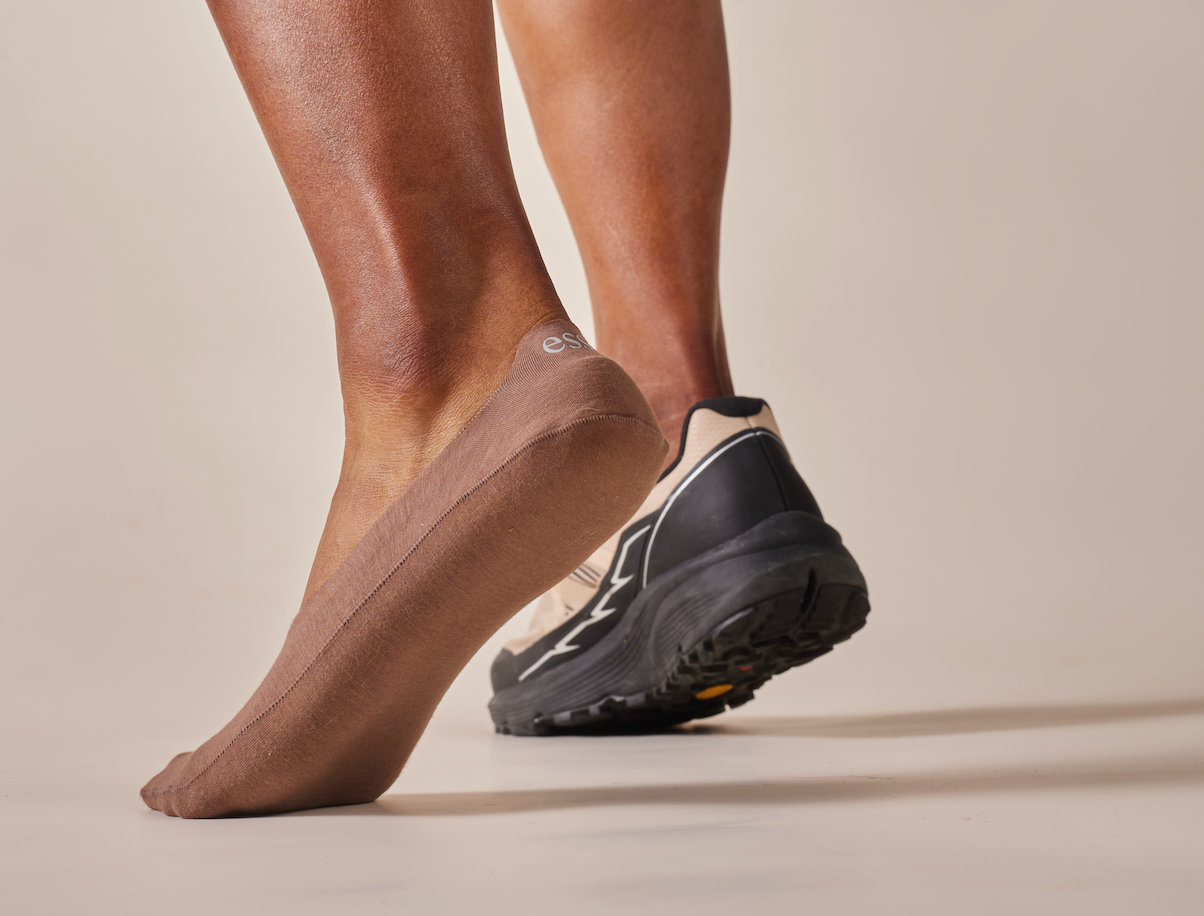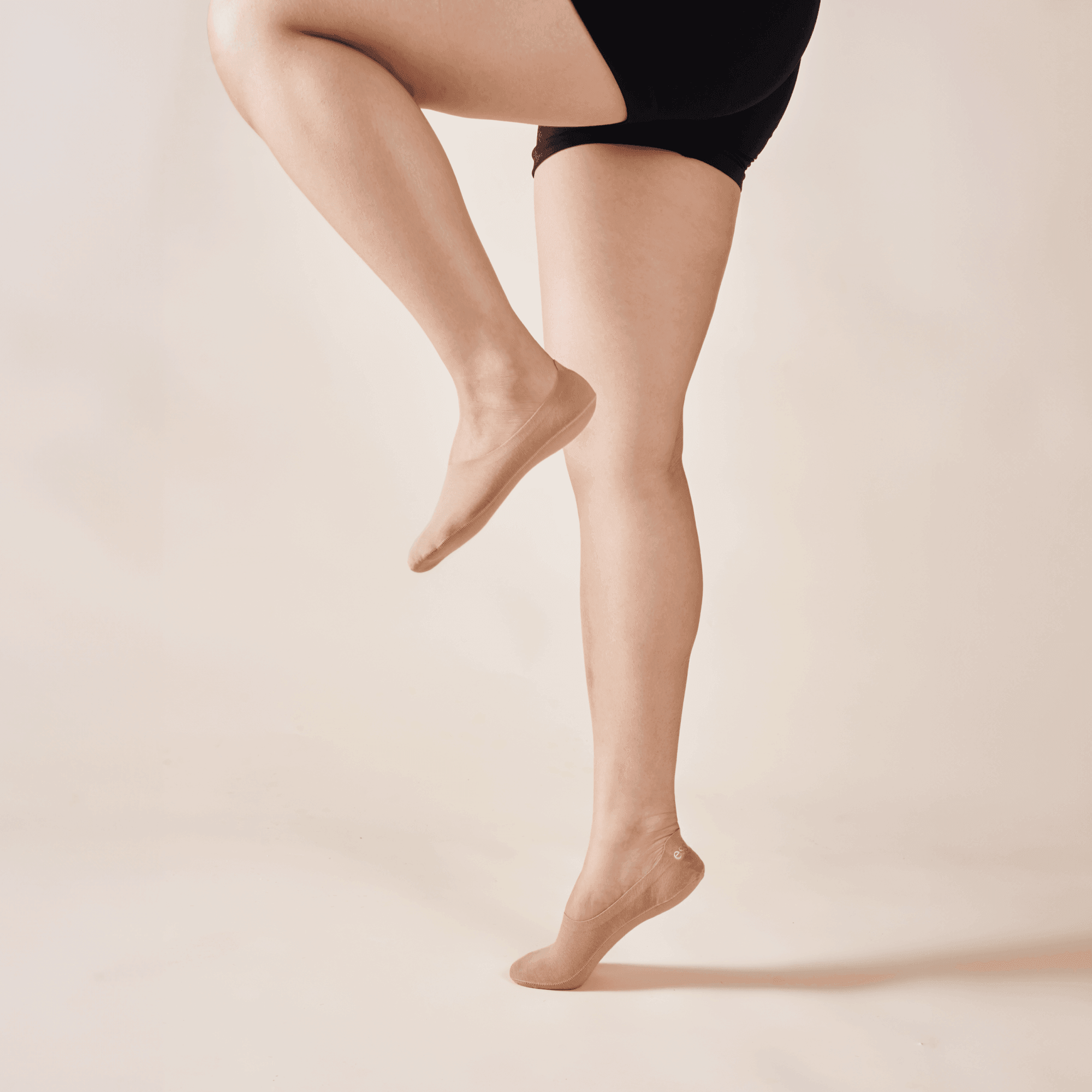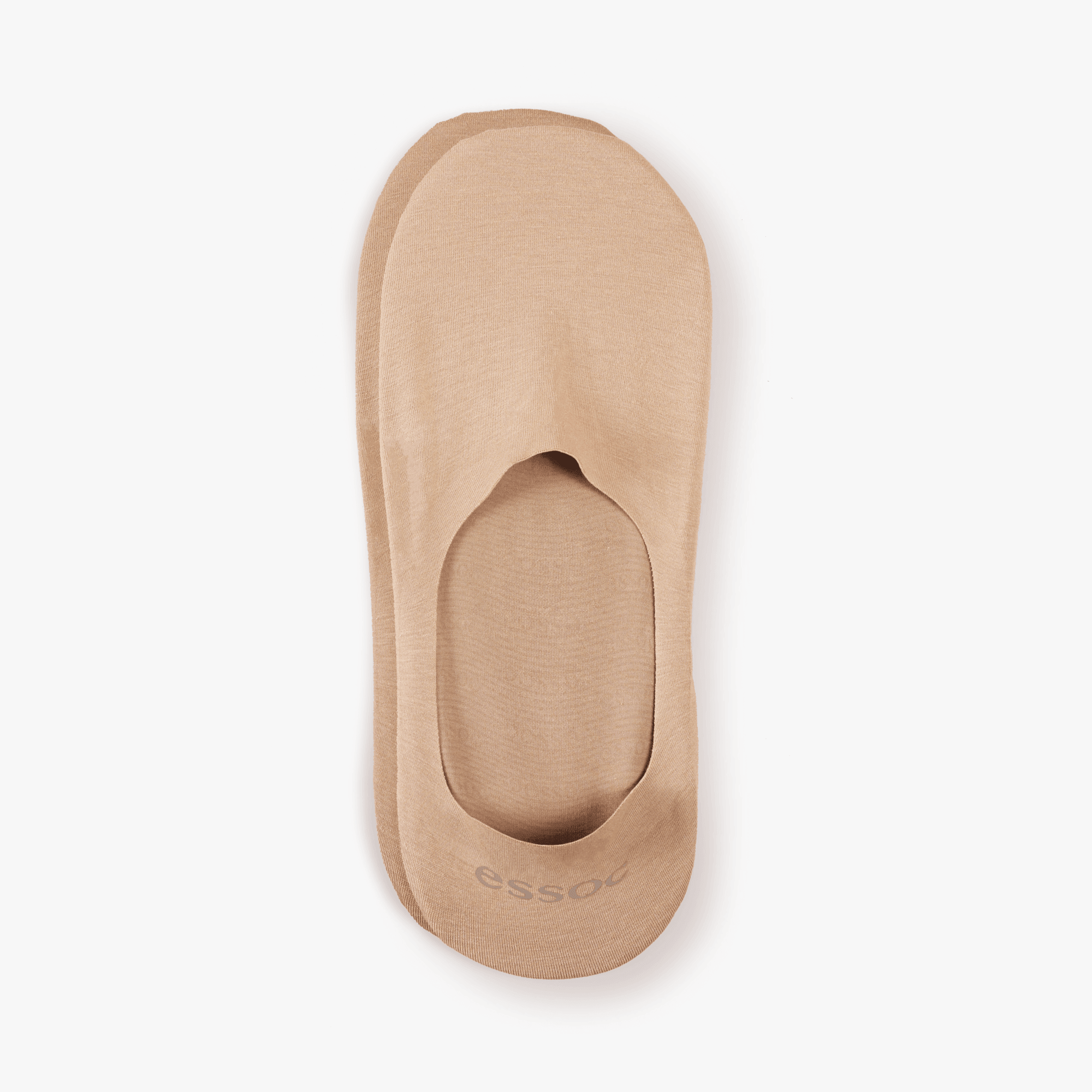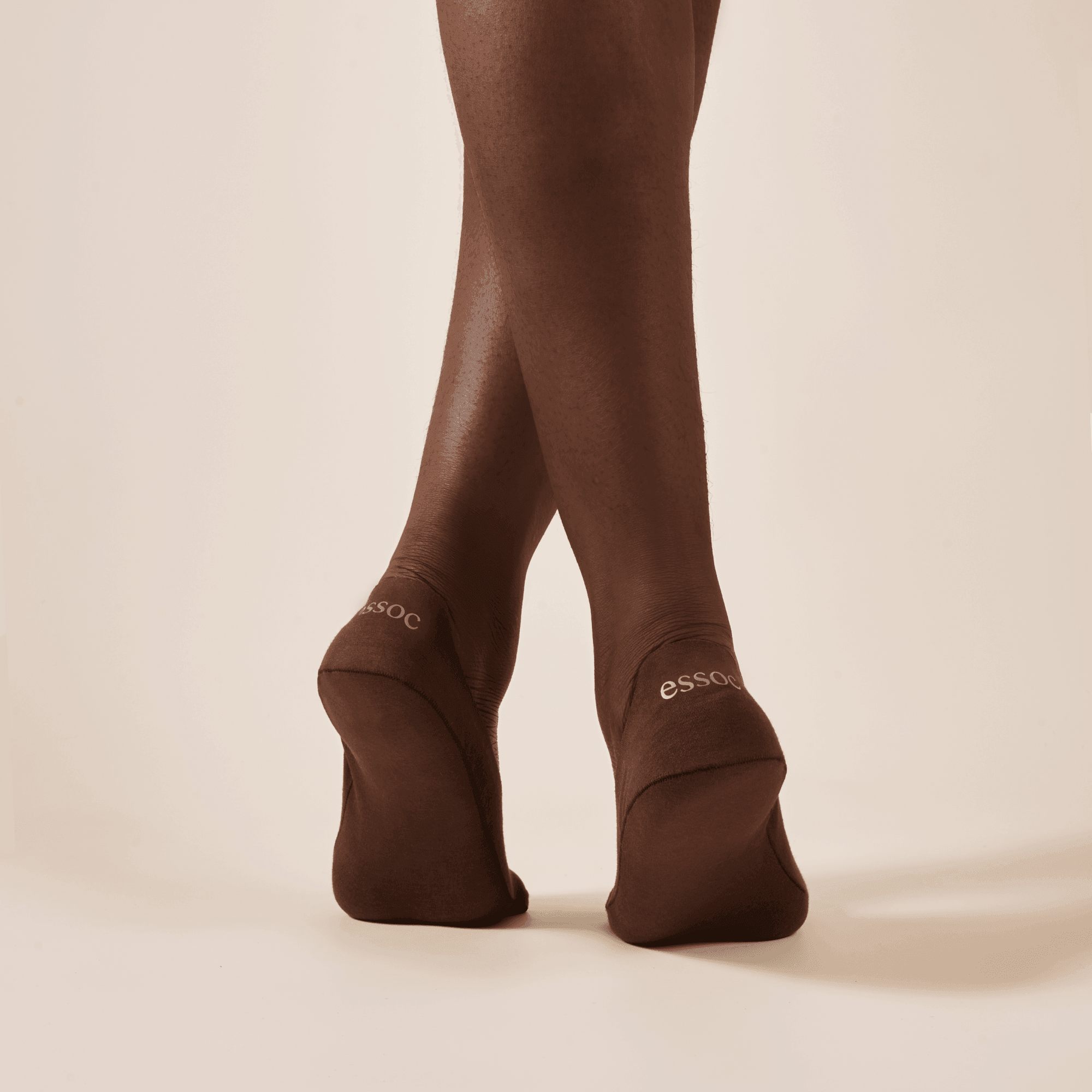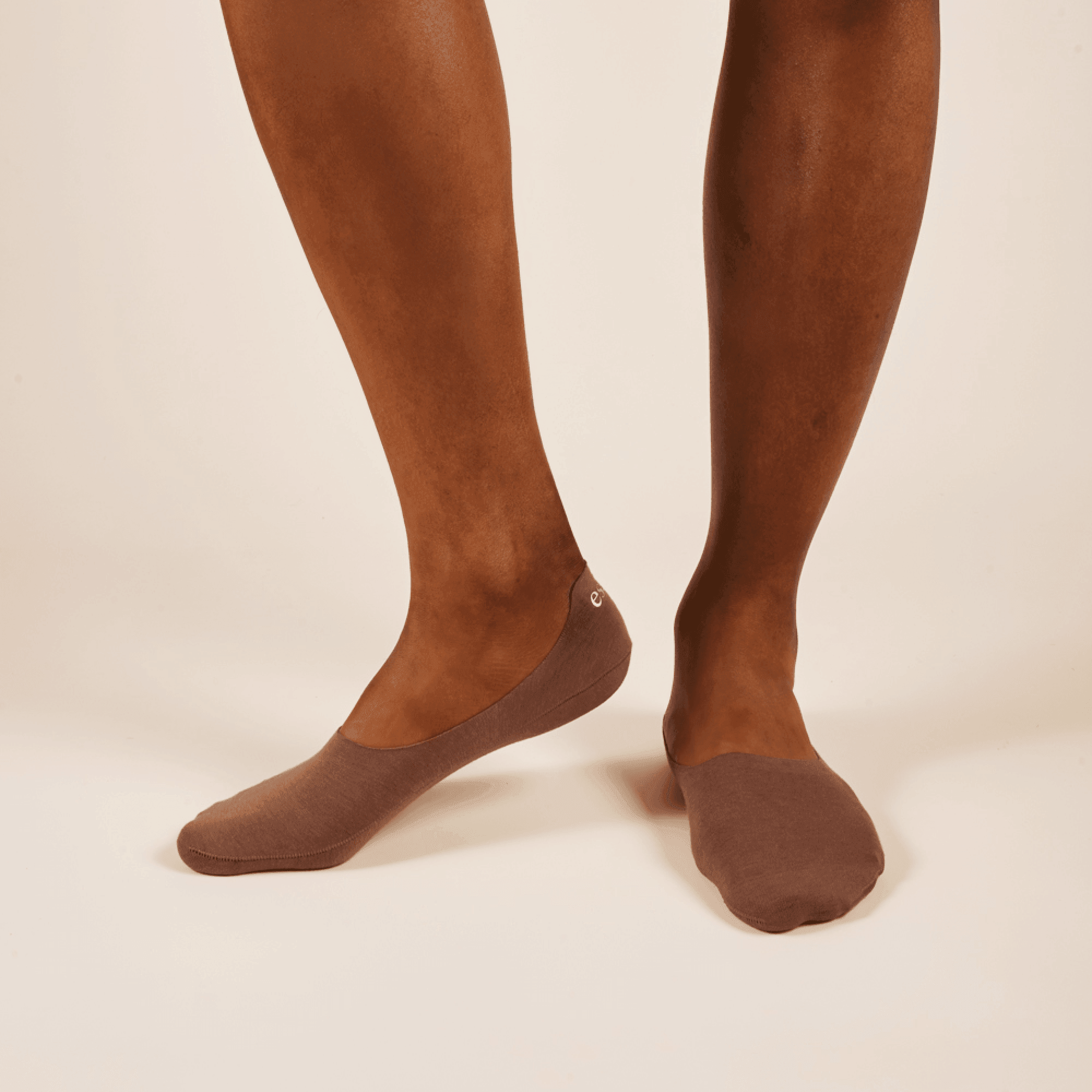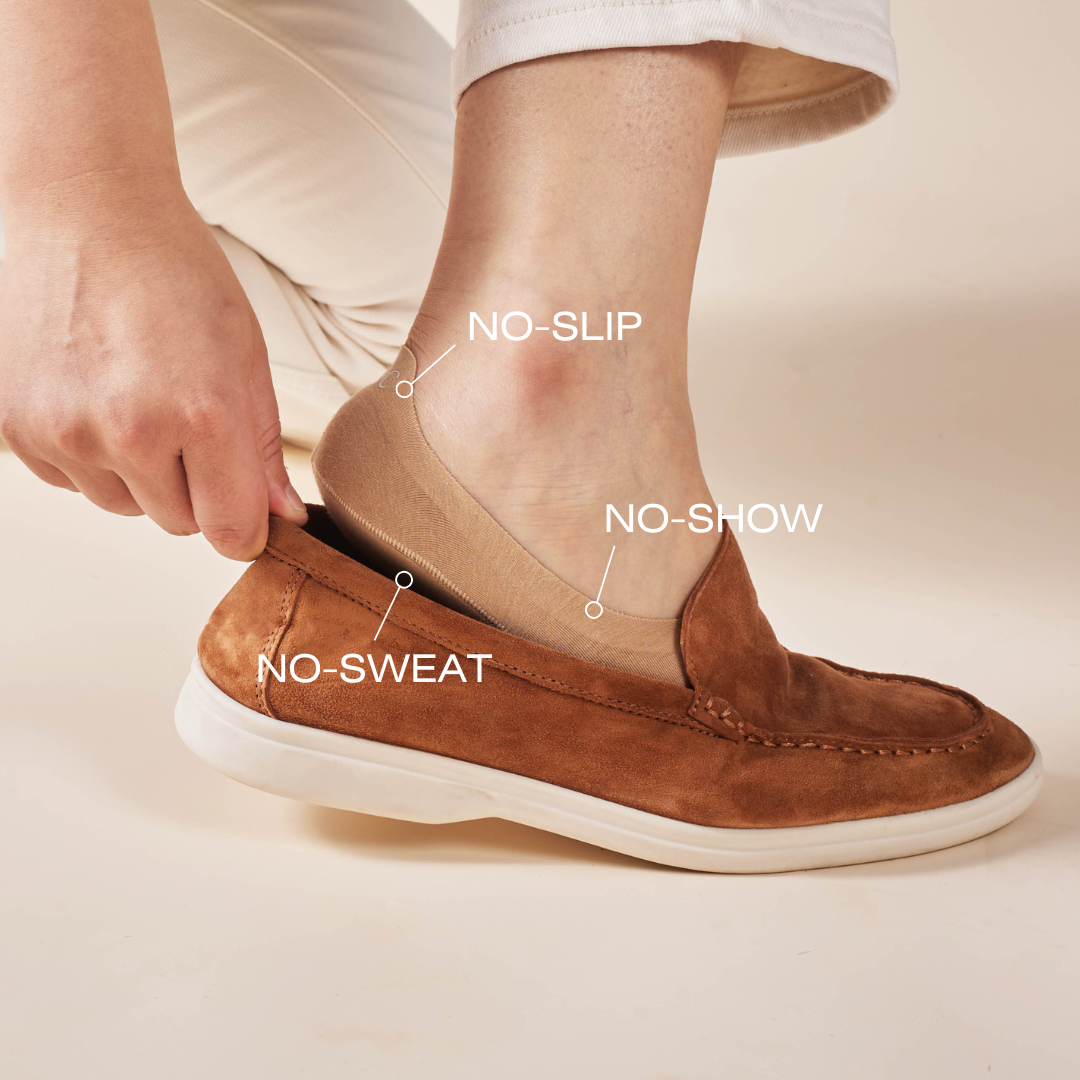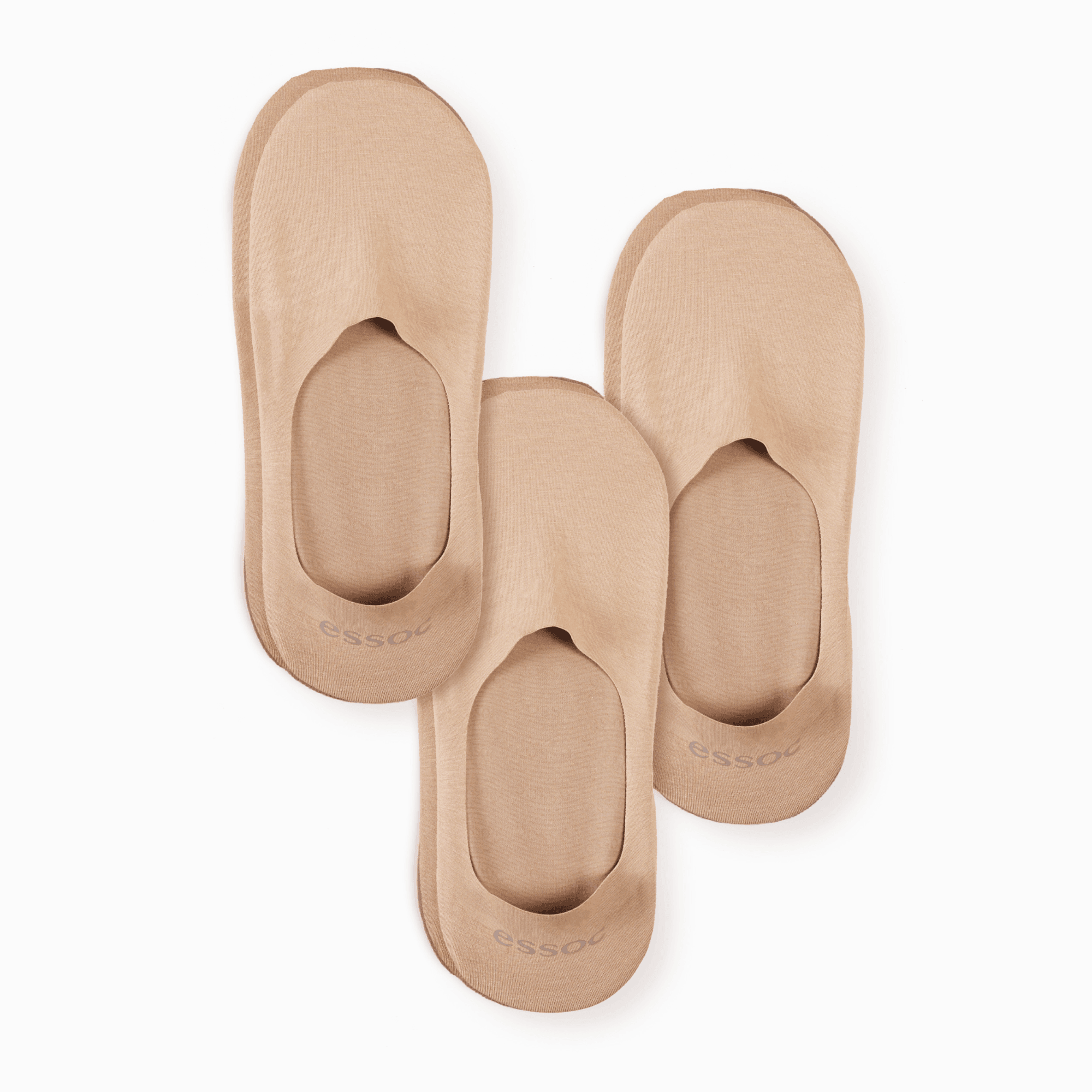Cotton no-show socks have become my go-to for wearing athletic shoes, blending comfort and breathability while keeping a low profile. I’ve realized that not all no-show socks measure up, especially for workouts. Finding pairs that stay in place, handle sweat, and prevent blisters is crucial.
Features like moisture-wicking fabrics and cushioning can make all the difference during those tough gym sessions. If you’re looking for the perfect fit that supports your activities, keep reading to discover the essential qualities of cotton no-show socks for athletic use.
Key Takeaway
- Cotton no-show socks blend comfort and breathability but need added features like heel grips and moisture-wicking fibers for athletic use.
- Proper fit, cushioning, and reinforced areas help prevent slipping and blisters during physical activity.
- Choosing socks with cotton blends and caring for them properly extends durability and performance.
Understanding Cotton No-Show Socks for Athletic Shoes
What Are No-Show Socks?
I was looking at my sneakers the other day and thought, man, visible socks really kill the clean look of my low-tops. But going barefoot? That's just asking for blisters. That's exactly why no-show socks exist.
These little foot-savers sit below your shoe line, completely invisible when you're wearing low-cut sneakers. You get that sockless look without the raw, rubbed skin that comes from direct contact with your shoes. They're basically ninja socks - doing important work while staying completely out of sight.
For athletic shoes specifically, these socks are game-changers. They protect your feet during workouts and walks while maintaining that sleek, modern look that regular crew socks just can't deliver.
Benefits of Cotton Material in Socks
Cotton's been around forever for good reason. When it comes to what touches my skin all day, I prefer materials that:
- Feel soft against my feet
- Let my skin breathe naturally
- Don't trigger allergies or irritation
- Can handle regular washing
Cotton delivers on all these points. It's like wearing a comfortable t-shirt for your feet. The natural fibers feel different than synthetic materials - there's a softness that's hard to replicate.
The downside? Cotton loves moisture. It soaks up sweat but doesn't get rid of it quickly. For light activities, cotton no-shows are perfect, but for serious workouts, they might leave your feet feeling damp.
Athletic Performance Needs
When I'm active, my socks need to work as hard as I do. They can't just look good - they need to perform.
The best athletic no-shows should:
- Stay put (nothing worse than a sock sliding under your heel)
- Handle moisture effectively
- Cushion where needed
- Fit snugly without feeling tight
- Not stink after one wear
Regular cotton socks sometimes fall short here. They might feel great at first, but once the movement starts and sweat builds up, they can bunch up or feel soggy. That's why many athletes prefer cotton blends that add some technical features to the natural comfort.
Style and Comfort Preferences
I want my feet to feel good, but I also care about how my shoes look. No-show socks give me both - they're practically invisible with low-cut shoes but still protect my feet from friction.
What makes a no-show sock actually comfortable? For me, it's:
- No annoying seam across the toes
- Thin enough to fit in my shoes without crowding
- Stretchy enough to move with my foot
- Stays up instead of disappearing into my shoe
The right no-show sock should make you forget you're wearing it. If you're constantly thinking about your socks, something's wrong.
Essential Features of Cotton No-Show Socks
Material Composition
I've tried dozens of no-show socks, and let me tell you - what they're made of matters. Cotton feels great against skin, but it needs friends. The natural fibers let my feet breathe when I'm stuck in sneakers all day. It's like having tiny windows for your toes.
But cotton alone? Not enough. The best no-shows I've found mix in other materials:
- Polyester to pull moisture away
- Nylon for durability (especially at the heel)
- Spandex so they actually stay put
This combo gives me the comfort of cotton with performance that pure cotton just can't deliver. My feet stay drier and the socks last longer.
Fit and Stability
Nothing ruins my day faster than a sock that's slowly disappearing into my shoe. I've thrown away plenty of no-shows that couldn't stay put.
The secret is in the grip. Good no-shows have:
- Silicone strips at the heel
- A snug (but not tight) band around the opening
- Proper sizing that matches your foot
Some pairs—like the ones I found in Essoc's collection—just get it right. When I find no-shows that stay in place through a full day of walking, I buy them in bulk. Life's too short for constantly fishing out collapsed socks from your shoes.
Cushioning and Support
Even thin no-shows need strategic padding. My favorite pairs have extra thickness right where I need it:
- Under the heel where impact happens
- Across the toe to prevent blisters
- Light compression through the arch
This targeted cushioning makes a huge difference during long days. I don't need thick socks - just smart ones that protect the pressure points.
Breathability and Moisture Control
Cotton breathes naturally, but athletic no-shows need more help. The best ones have mesh zones that let heat escape and moisture evaporate.
Without good airflow, my feet get sweaty fast. And wet feet mean blisters, odor, and general discomfort. The right no-show socks keep things dry without feeling synthetic or stiff against my skin.
Performance and Durability Considerations
Credits: Fleet Feet
Longevity Factors
I've gone through countless pairs of no-show socks over the years, and I've learned that durability comes down to construction more than anything else. The first place my socks always fail? The toe and heel. Every single time.
When I'm shopping now, I immediately flip the sock inside out and check the stitching. If it looks flimsy or has loose threads already, I put it back. The best pairs have reinforced zones where friction happens most.
What makes a sock last:
- Double-layered fabric at the heel
- Tighter weave across the toe box
- Flat seams that don't create pressure points
- Elastic that maintains tension after washing
I've found that paying a bit more upfront saves me money in the long run. Cheap socks might cost less initially, but when I'm replacing them every month, that adds up fast.
Suitability for Different Activities
I learned this lesson the hard way - not all no-shows work for all activities. For casual wear around town, standard cotton no-shows feel great. But the first time I wore them for a 5-mile run, I ended up with soggy feet and a blister the size of a quarter.
Now I match my socks to what I'm doing:
- Light workouts: cotton-blend no-shows with light cushioning
- All-day wear: no-shows with arch support and heel grips
- Hot weather: thinner cotton blends with mesh panels
Essoc’s collection covers a good range of those types, which makes it easier to pick the right pair. The right sock makes a huge difference in comfort. I've walked all day in the wrong socks and regretted every step by afternoon.
Common Drawbacks and Solutions
The most annoying problem with no-shows? When they don't stay "no-show" and instead slide down into your shoe. Nothing ruins my focus faster than feeling that sock bunching under my heel.
After much trial and error, I've found solutions:
- Silicone grips at the heel actually work (if there's enough of them)
- Proper sizing matters more than with regular socks
- The shape of the heel cup determines whether it stays put
As for sweat management, pure cotton just doesn't cut it for active days. My feet stay much drier in cotton blends that include some synthetic fibers to pull moisture away. The comfort of cotton with the performance of technical materials gives me the best of both worlds.
When I find a pair that stays in place, manages moisture, and doesn't wear through after three wears, I stock up. Good no-shows are worth their weight in gold.
Product Recommendations and Selection Tips
Choosing the Right Pair for Your Needs
I've bought so many no-show socks that didn't work, I could open a sock museum of failures. Now I know better. The right pair depends entirely on what you're doing in them.
For everyday wear, I want something that disappears under my shoes but doesn't disappear inside them. That’s why I keep reaching for Essoc’s ultra-low profiles with silicone grips—they feel invisible but act like they’re custom made.
For workouts, I need socks that can handle sweat without bunching up.
My selection checklist:
- Check heel depth - shallow heels slide down immediately
- Look for silicone grips - more is better
- Feel the thickness - too thin means blisters, too thick means tight shoes
- Stretch test - if they don't bounce back when pulled, they'll sag after one wear
The perfect no-show sock should feel like it's hugging your foot, not just covering it.
Importance of Reviews
I never buy socks without reading what other people experienced. The product description might promise "non-slip technology," but real users will tell you if they're fishing the sock out of their shoe every ten minutes.
What I look for in reviews:
- Comments about durability after multiple washes
- Mentions of sizing (runs small/large)
- Photos showing actual height on the ankle
- Notes about comfort during all-day wear
Those real-world experiences save me from wasting money on socks that look good in the package but fail in practice.
Care and Maintenance Guidelines
Treating your no-shows right makes them last longer. I learned this after shrinking countless pairs in the dryer.
My care routine:
- Wash in cold water, gentle cycle
- Skip fabric softener (ruins the grip)
- Air dry whenever possible
- Store paired together to avoid losing one
Taking these small steps has doubled the lifespan of my favorite pairs. Good no-shows aren't cheap, so treating them with care just makes sense.
Practical Advice for Choosing Cotton No-Show Socks
Finding Your Perfect Fit
I've wasted so much money on no-show socks that ended up bunched in my shoe or lost in the laundry. Now I know what works for my feet and what doesn't.
The right cotton no-shows should feel like they're part of you—secure, breathable, and practically invisible. Essoc nails that combo with their smart cotton-modal blend and 3D heel design that hugs without pressure. When I'm shopping, I always:
- Look for blends (80% cotton with synthetic fibers for stretch)
- Check the heel grip pattern - more silicone means better stay-power
- Feel the thickness - too thin means blisters, too thick means tight shoes
- Stretch test the opening - if it doesn't snap back, it'll sag later
Matching Socks to Activities
Different activities need different socks. I learned this after a day of walking in the wrong pair left me with a blister the size of a quarter.
For walking tours, I need cushioning at the heel and ball of foot. For gym sessions, I need something that wicks sweat away. For everyday wear, comfort and staying put matter most.
I've found having three types covers most situations:
- Thicker cushioned pairs for high-activity days
- Mid-weight pairs for everyday wear
- Ultra-thin pairs for dress shoes and loafers
When they're right for the job, good no-shows make your feet happy. And happy feet make everything better.
FAQ
What are the best no-show socks to wear with athletic shoes during summer?
The best no-show socks for hot days are summer no-show socks made from breathable cotton socks or cotton blend socks. They help your feet stay cool and dry. Look for moisture-wicking no-show socks and odor-resistant socks if your feet get sweaty. Thin no-show socks and cushioned no-show socks are soft without being bulky. Anti-slip no-show socks help your socks stay in place. Lightweight cotton socks and machine washable socks are easy to wear and clean, which is great for daily use.
Are cotton no-show socks good for working out or running?
Cotton no-show socks are good for light activities. But for hard workouts or running, cotton athletic socks with extra features are better. Choose performance no-show socks, athletic liner socks, or socks for running shoes. You want arch support socks, sweat-absorbing socks, and cushioned no-show socks for comfort. Stretchy no-show socks or compression no-show socks help them fit well. Seamless socks for sneakers and anti-blister socks also stop rubbing and pain when you move a lot.
How do I stop my cotton no-show socks from slipping down?
If your socks slide off, try heel grip socks or no-show socks with silicone grip. These stay on better. Socks that stay up usually have a strong heel fit. Try low profile socks or hidden socks for shoes that still look “invisible.” Anti-slip no-show socks and non-slip sneaker socks have extra grip to keep socks in place. For socks for sweaty feet, cotton socks with spandex or cotton footies help your socks stay on better too.
What kind of cotton no-show socks should I use for casual and daily wear?
For everyday use, pick soft cotton socks or cotton socks for daily wear. They feel good and don’t hurt your feet. Everyday no-show socks should be easy to wash too, so machine washable socks are best. Cotton socks for comfort work great with no-show socks for casual shoes or no-show socks for walking. If your skin is sensitive, go for organic cotton no-show socks or no-show socks for sensitive skin. You can get unisex no-show socks, or choose men’s cotton no-show socks or women’s cotton no-show socks for a better fit.
Conclusion
Cotton no-show socks for athletic shoes strike the perfect balance of comfort, breathability, and style. While I appreciate pure cotton for its softness and airflow, I find that blends with synthetic fibers offer essential performance features for my active lifestyle. Look for heel grips, arch support, and cushioning to enhance fit and protection.
Choosing the right socks means balancing softness with durability and moisture management, ensuring my feet stay comfy and dry during any activity. That’s exactly what I get from Essoc—socks that feel like a second skin and perform like gear built for movement.


